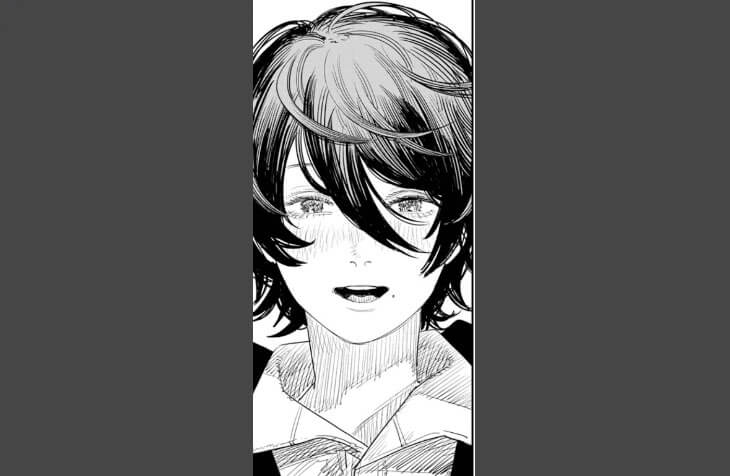I don’t know if I’ll ever read Chainsaw Man but after reading Tatsuki Fuijimoto’s one-shot manga Look Back I might have to. Capturing youthful arrogance and harsh reality, Fujimoto bewitches you in this emotional exploration of the effects we have on each other.
Look Back
Tatsuki Fujimoto (creator), Amanda Haley (Translation), Snir Aharon (Lettering)
VIZ Signature
September 20, 2022

CW for the book: Violence, blood, Discussion of mass violence at a school
This review contains spoilers. Though the print version will be released 20 September 2022, the complete manga was available for free online throughout 2021. A review of the online edition was previously published on WWAC as well.
Fujino is an arrogant fourth grader who thinks she’s the best artist ever. That is, until Kyomoto, whose social anxiety is too high for her to attend school, starts submitting work to the school newspaper too. And Kyomoto turns out to be on another level.
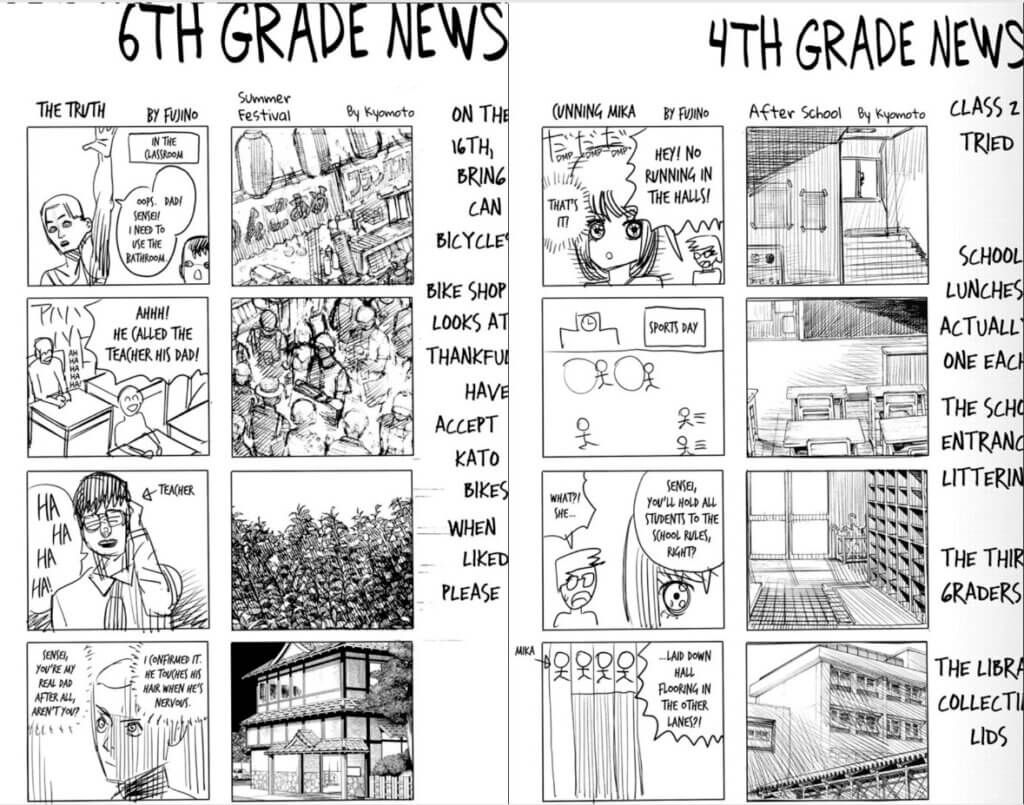
The other kids at school, seeing Kyomoto’s, think Fujino’s art is “totally average,” which of course infuriates Fujino, and pushes her into her lifelong obsession: drawing. Fujimoto captures this obsession through a scene reused throughout the book of Fujino anywhere and everywhere in the same hunched position, back turned away from the reader. With one small hitch in sixth grade, Fujino never turns away from drawing.
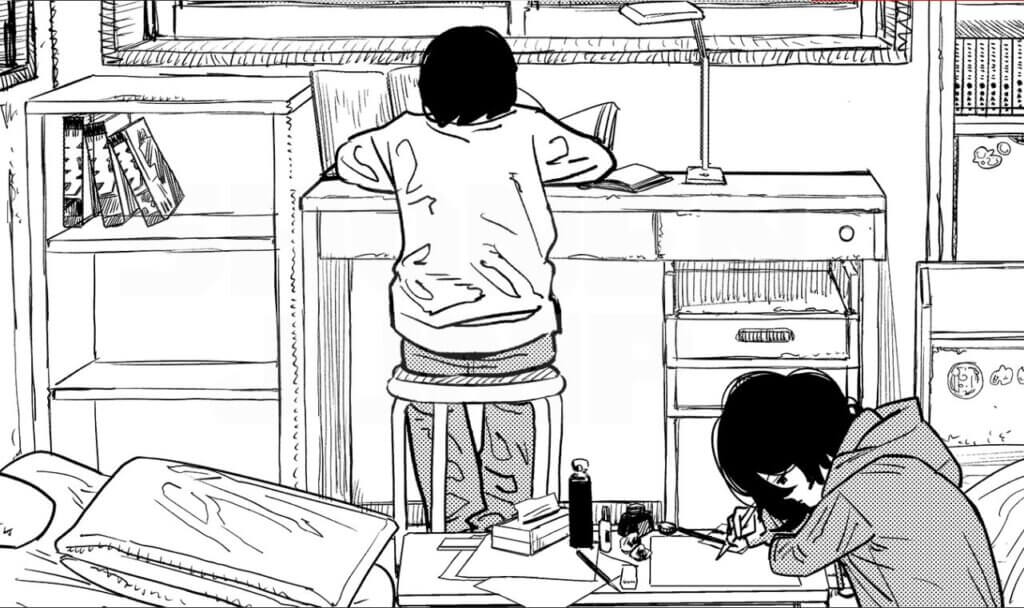
However, the comparison of their art next to one another also highlights that each miss something. Fujino captures people, dialogue and plot. Kyomoto captures details and setting. And comics need both. For each of them though, while they both improve their styles, they don’t add what they lack into their art. So it isn’t until they combine forces as friends that their work transcends the sum of its parts. However, even when Kyomoto and Fujino collaborate, Fujimoto centers Fujino clearly in their coworking frames.
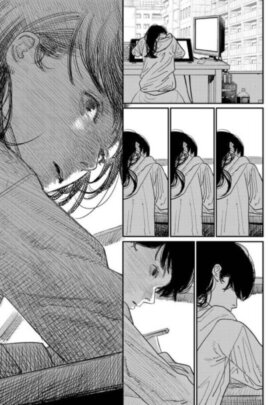
Then, Fujimoto breaks the lone artist image of Fujino. Almost exactly halfway through the book, after we’ve witnessed Fujino and Kyomoto’s friendship blossom and wilt, we see what it takes to pull Fujino’s focus away from drawing.
This page illustrates the dawning realization of what Fujino hears from the screen next to her. That there has been a horrific massacre at an arts college. Specifically, the one that Kyomoto attends, where she decided to improve her art rather than assist Fujino’s career.
The art hints at how the story will shift away from Fujino and towards Kyomoto. The page gives Fujino movement out of her static drawing stance and this combines with a shift in the art’s style, from cartoonish to realistic, reflecting a return to reality. Besides the symbolic implication that Fujino is brought back to reality by this news, I love that the style change also reflects Fujino and Kyomoto as characters. A shift from Fujino’s style to Kyomoto’s.
And I thought to myself at this point halfway through the book “Holy Shit, what is Fujimoto going to do with this?” And what he does is some of the most impactful visual storytelling I’ve ever read.
The second half of the book is a condensed retelling of the first. Exploring the earlier symbolism, this half focuses on Kyomoto. For the price of their childhood collaborations, Kyomoto’s life is saved by a Fujino who, having given up manga, focused on karate and uses those skills to prevent the massacre.
And Fujimoto skillfully uses a page turn to transition us into this alternate reality, as a torn panel from one of Fujino’s comics tells a jarringly young and very much alive Kyomoto to stay in her room. A new page and a new story.
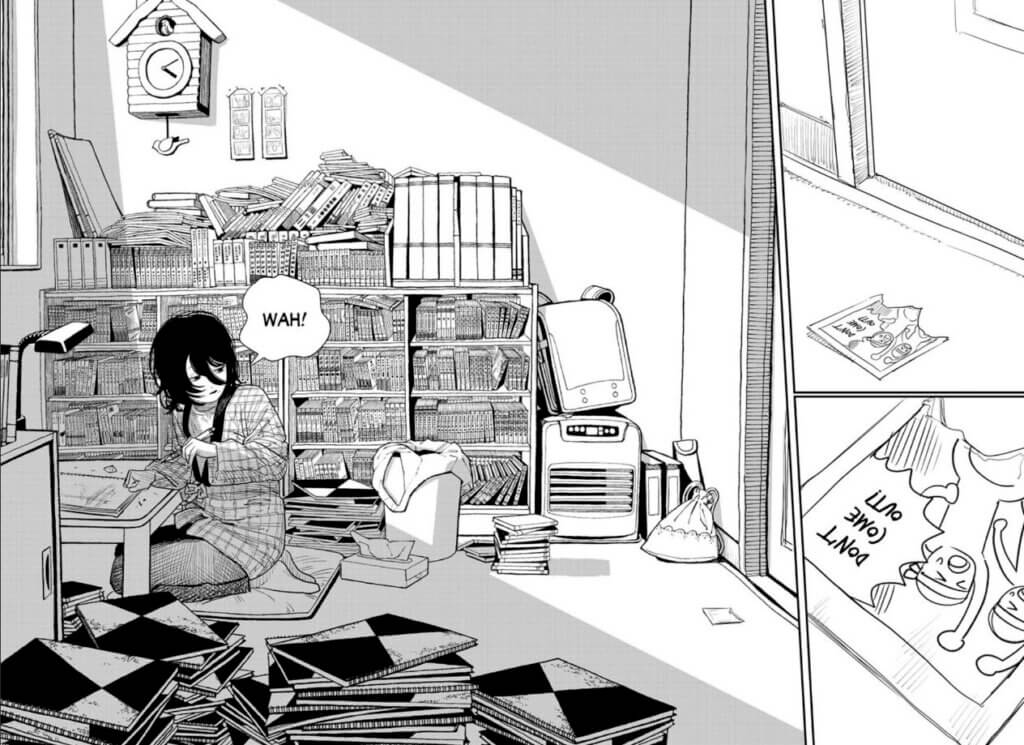
In one of the only clearly illustrated moments of someone looking backward, Kyomoto turns around to heed the warning. This sets us up for the next transition, which is when we cut back to Mangaka Fujino. Barging into Kyomoto’s room, I was as shocked as her to see no one inside. Based on the preceding pages, I thought Kyomoto would be there. Not just an empty room.
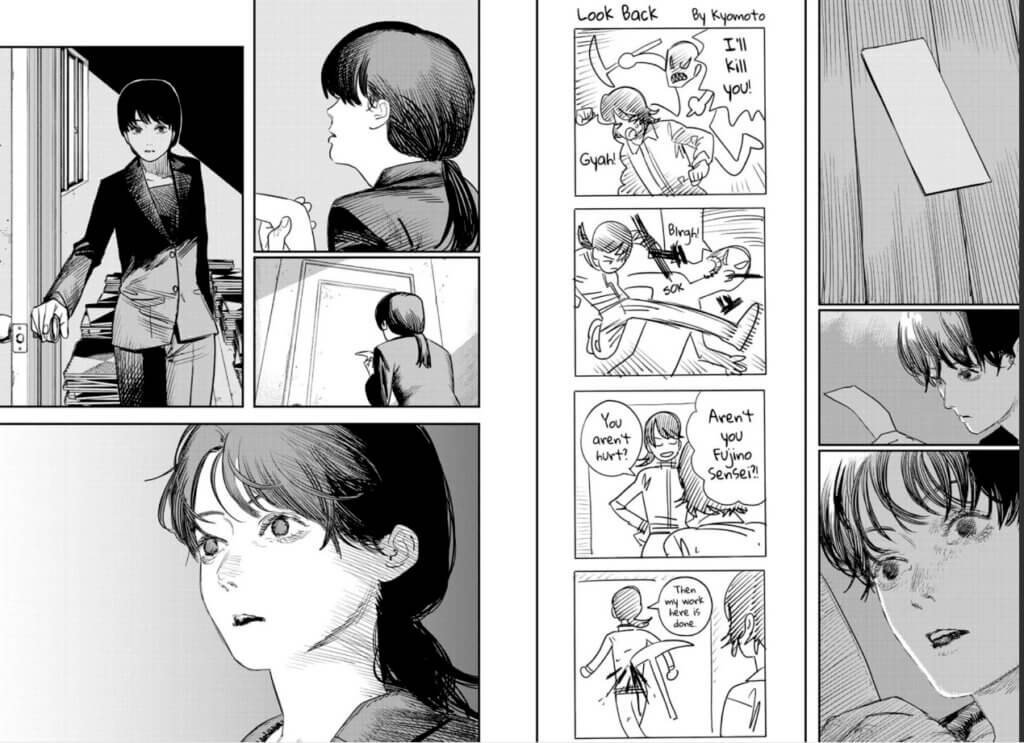
What I love about this is that we’re left wondering. Did what we see actually happen?
Why? Well, the preceding page depicts a comic drawn by Kyomoto sliding back under the door, which beckons Fujino to enter. But Fujino prime doesn’t get to change the past and restart her relationship with Kyomoto. Instead she has to look back, first at a sweater hanging on the door and then in her own memories to cherish the relationship she did have with her friend. And as she looks around the room she realizes that her biggest fan was just as devoted as ever.
Upon seeing that room filled with Shark Kick, her solo manga, and looking back on their lives, Fujino does go back. Back to her desk. Returning to what Kyomoto would have wanted her to do, make manga. And when tragedy strikes, that’s all we can do. We look back, so that we can move forward.

